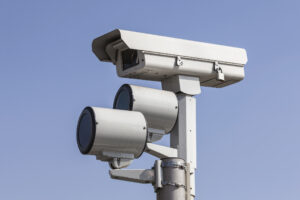
Red light cameras have become a staple in traffic enforcement across the United States, aiming to reduce car accidents by penalizing those who run red lights. However, their presence and methodology have sparked considerable debate.
This blog explores the workings of red light cameras, the arguments for and against their use, and their implications on drivers and traffic safety. If you have been involved in an accident and require a free legal consultation, contact Law Offices of Fernando D. Vargas at 909-982-0707.
Understanding Red Light Cameras
The Mechanics of Operation
Red light cameras are integrated with traffic signals and sensors to detect vehicles that proceed through intersections during the red phase. To avoid penalizing drivers who enter the intersection just as the light turns red, a brief grace period, typically around half a second, is allowed. Only those clearly violating the signal are targeted, with photos and videos serving as evidence.
Verification and Oversight
Every captured incident is reviewed by police officers or trained personnel to confirm a violation occurred. This scrutiny ensures that citations are issued based on solid evidence of red light running, maintaining fairness in enforcement.
The Nature of Citations
Civil vs. Moving Violations
In most states, red light camera citations are classified as civil offenses, not moving violations. This distinction means no points are added to the driver’s record, and insurance rates are generally unaffected. However, California, Arizona, and Oregon treat these citations similarly to traditional traffic stops, leading to points on the driver’s record and potential insurance impacts, thereby increasing the likelihood of these citations being contested.
Accountability and Liability
Who Bears the Responsibility?
The approach to assigning responsibility for red light violations varies by state. Some states require proof that the registered vehicle owner was driving at the time of the offense. Conversely, other states hold the vehicle owner liable, akin to parking violations, regardless of who was driving.
The Controversy Surrounding Red Light Cameras
Arguments For and Against
Proponents argue that red light cameras enhance road safety by deterring reckless behavior, thus reducing the incidence of accidents caused by red light running. Critics, however, contend that these systems prioritize revenue generation over public safety, sometimes even leading to increased rear-end collisions as drivers abruptly stop to avoid being photographed.
Balancing Safety and Fairness
The debate extends to the fairness of penalizing vehicle owners without proving they were the driver, especially in states where these citations can affect one’s driving record and insurance rates. This issue underscores the need for a balanced approach that ensures public safety while respecting the rights of individuals.
Seeking Legal Assistance
If you have been involved in an accident due to someone’s negligence, including running a red light, securing legal representation is crucial. Law Offices of Fernando D. Vargas offers comprehensive support and guidance, ensuring that your rights are protected. Contact us at 909-982-0707 for a free consultation and explore how we can assist you in navigating the aftermath of a traffic accident.
Red light cameras continue to be a polarizing topic, with valid arguments on both sides of the debate. As technology and enforcement practices evolve, the challenge lies in finding a middle ground that maximizes public safety without compromising individual rights or relying excessively on automated enforcement as a revenue source.




